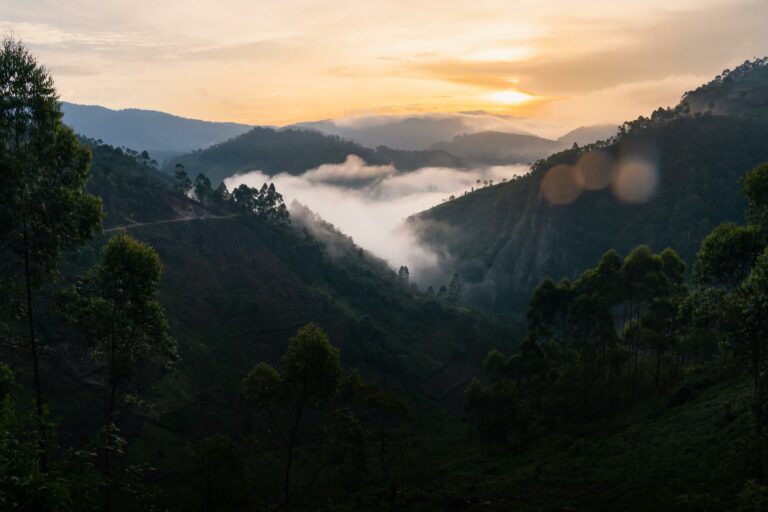Bwindi's Rich Biodiversity
Bwindi is renowned as a biodiversity hotspot, thanks to its dense collection of over 400 species of herbs, vines, shrubs, and plants.
This diversity earns Bwindi the label of "impenetrable."
Wildlife in Bwindi
The area is not only famous for its flora but also for its abundant wildlife. It hosts over 214 species of birds, 7 species of diurnal primates, 120 species of mammals, and 202 species of butterflies. Remember to bring your binoculars!
Conservation Efforts and Endangered Species
Bwindi's 321 square kilometer area also provides a sanctuary for nine globally threatened species. These include the iconic mountain gorillas, common chimpanzees, l’Hoest’s monkeys, African elephants, African green broadbills, Grauer’s rush warblers, Chaplin’s flycatchers, African giant swallowtails, and cream-banded swallowtails. These species share their habitat in a delicate balance, highlighting the importance of ongoing conservation efforts.

Climate
The forest can be cold, especially in the morning and at night; the annual average temperature range is 7°C - 20°C with the coldest period being June and July. As well as warm clothing, wet weather gear is essential since Bwindi receives up to 2,390 mm of rain per year.
Bwindi History
At the beginning, billions of years ago before anyone’s memories could record it,
the area was just steep mountains and narrow valleys.

Shaped by the rising western edge of the great African Rift Valley, the land was sculpted by intersecting streams, rivers, and waterways. Unable to permeate the land, these waterways cascaded down the hills, creating lakes now known as Lake Edward, Lake Bunyoni, and Lake Mutanda.
The region's geology caused abundant rainfall, encouraging dense tree growth. This process led to the formation of a forest, with warm tropical forest in the lowlands and cooler, misty rainforest at higher altitudes.
Enclosed by the Rwenzori Peaks to the north and the Virunga Volcanoes to the south, with the Albertine Rift and the Great Rift on either side, this primeval forest has stood silently for millennia.
Arrival of the Fauna
Over centuries, thousands of species have settled here, creating one of the planet's richest ecosystems. Even during global ice ages, Bwindi served as a refuge for many species, maintaining its exceptional biological diversity.
Current Biodiversity
Today, Bwindi hosts over 120 mammal species, 348 bird types, 220 butterfly varieties, 163 tree species, and 104 fern types. The forest is a habitat for half of the world’s mountain gorilla population and is the only forest where mountain gorillas and chimpanzees coexist.
Human Impact
The first inhabitants were the Batwa tribe, who lived in harmony with the forest. Subsequent peoples migrated over time, drawn by various needs and opportunities. In 1991, Bwindi was declared a UNESCO World Heritage site, recognized for its ecological importance and natural beauty.

They gave the forest the name Bwindi: meaning ‘Impenetrable’, or ‘Place of Darkness’.
Challenges Facing Bwindi
Despite its beauty and ecological significance, Bwindi faces many challenges. These include extensive poverty, conflicts between humans and wildlife, and other unresolved issues. However, with continued patience and understanding, solutions may eventually emerge.
